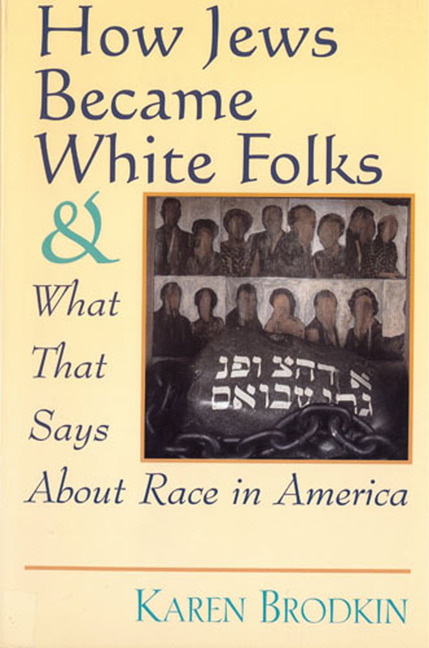Will new age of mixed-race identities loosen the hold of race or tie it up in tighter knots?
Newhouse News Service
2000-04-20
Jonathan Tilove
Ward Connerly, who describes himself as a roughly equal mix of French Canadian, Choctaw, African and Irish ancestry and who is married to a white woman, spent much of the last decade campaigning to end race-based affirmative action. Susan Graham, a white woman married to a black man, has spent that same decade working tirelessly as the founder of Project RACE (Reclassify All Children Equally) so that her two children and others like them could be counted in official statistics as “multiracial.”
For the first time in American history, respondents to the decennial census are able to identify themselves by as many races as they see fit. The tabulated results will yield 63 different categories and combinations—or 126 considering that each of those 63 could also be either Hispanic or non-Hispanic. And that does not take into account the limitless possibilities for writing in some race of one’s own devising.
But when the 2000 census is completed, all the folks at both the Connerly and Graham households will be assigned the race of their nearest neighbors. Why? Because both Connerly and Graham, for their own very different reasons, refused to check any of the boxes on the race question.
As America embarks on a new, more complicated era of racial counting, a look at how some of those close to the issue chose to answer the census race question presents a puzzle: Is this dawning age of mixed-race identities likely to loosen the hold of race on the American mind, or merely tie it up in tighter knots?
“It is progress,” said G. Reginald Daniel, a sociologist at the University of California at Santa Barbara. “Whether people understand it or not, we’re undoing 300 years of racial formation. We have yet to see the after-effect, but it will be radical.”
Daniel, who grew up black in Kentucky, said he has been thinking about his racial identity since Dec. 2, 1955, when his first-grade teacher reported that Rosa Parks had been arrested for refusing to let a white passenger have her seat on the bus. “It’s time we colored people stood up for our rights,” the teacher told her students.
Daniel was puzzled. He raised his hand and asked the teacher who “colored” people were. “Everyone in this school,” the teacher, startled, replied. But, Daniel persisted, what color are they? “We’re brown! We’re Negroes!” the teacher replied…
But Daniel’s skin was tan, a blend of white and brown, and when he asked his mother about it she explained that while they were a mix of African, Irish, English, French, American Indian, Asian Indian and maybe even German-Jewish, they were still members of the “Negro race.”
Over time, Daniel came to identify himself as multiracial. He became a leading intellectual adviser, at one point to Project RACE and on a continuing basis to the Association for MultiEthnic Americans (AMEA)—the largest of the organizations that pressed for a multiracial category on the census. The federal Office of Management and Budget rejected that possibility but in 1997, after four years of deliberation, announced that on the 2000 census respondents would be able to check as many races as apply…
…But to Susan Graham, the form felt like one step forward and two steps back. Graham had wanted a separate multiracial category so that children like hers would not have to choose between their parents’ racial identities, or end up some unclassifiable “other.”…
…“I’m not about to have my children check more than one box only to be relegated back to the black category,” said Graham, who now lives in Tallahassee, Fla. She left the race question blank.
But the census cannot permit blanks, so, by a statistical method known as “hot deck imputation,” Graham’s family will be assigned races that blend best with their closest neighbors—the assumption being that most people live in neighborhoods that match them racially. And, in Graham’s case that is true, with immediate neighbors black, white and interracial.
Rainier Spencer, a professor of Afro-American studies at the University of Nevada at Las Vegas, has studied the multiracial movement in his book, “Spurious Issues: Race and Multiracial Identity Politics in the United States.” He faults Graham’s logic.
In Spencer’s view, Graham and others in the multiracial movement deploy their distaste with the one-drop rule selectively. If they truly want its repeal, they must recognize that virtually all African-Americans are multiracial.
To him, the whole notion of a multiracial identity depends on an assumption that racial identity is real. And as Spencer told some 100 students at the Pan-Collegiate Conference on the Mixed-Race Experience, held recently at Harvard University and Wellesley College, “All racial identity is bogus, no matter whether the prefix is mono, multi or bi.”
The “insurgent idea” of multiraciality can undermine the racial order by “demonstrating the absurdity of fixed and exclusive racial categories,” he writes in his book. But the moment multiracial becomes an official category—a box to be checked—it no longer undermines the existing racial paradigm, but expands it.
Moreover, Spencer said, while race may not truly exist, racism does, and OMB acted quite appropriately in ordering the racial data collapsed back into traditional categories for civil rights purposes…
Read the entire article here.
